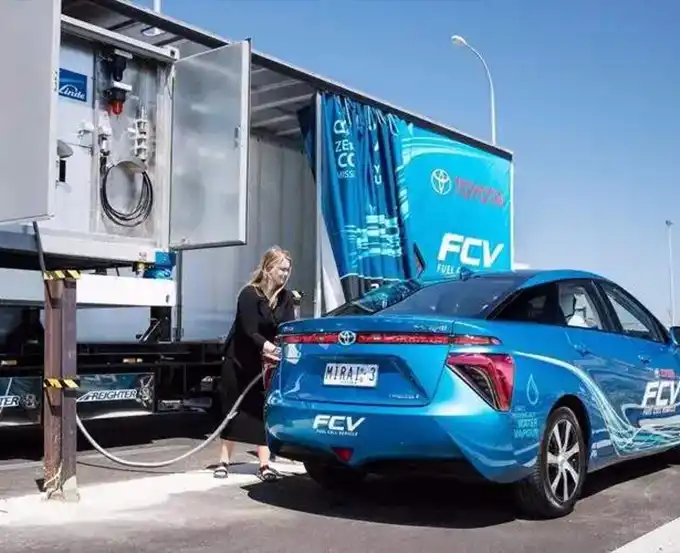Since the birth of proton exchange membrane fuel cells (PEMFCs) in the 1950s, scientists worldwide have never ceased their in-depth research on PEMFCs. This has led to significant advancements in performance, lifespan, and cost, resulting in their widespread application in transportation, portable power sources, and distributed power generation, gradually promoting the commercialization of PEMFCs.
As of January 9, 2024, GLOBE NEWSWIRE (Market.us) reported that the hydrogen production market reached $177 billion in 2023 and is expected to grow significantly, reaching $489.2 billion by 2033. From 2024 to 2033, this market is expected to experience the highest compound annual growth rate (CAGR) of 10.7%. The hydrogen market here refers to industries involved in the production, storage, and distribution of hydrogen.
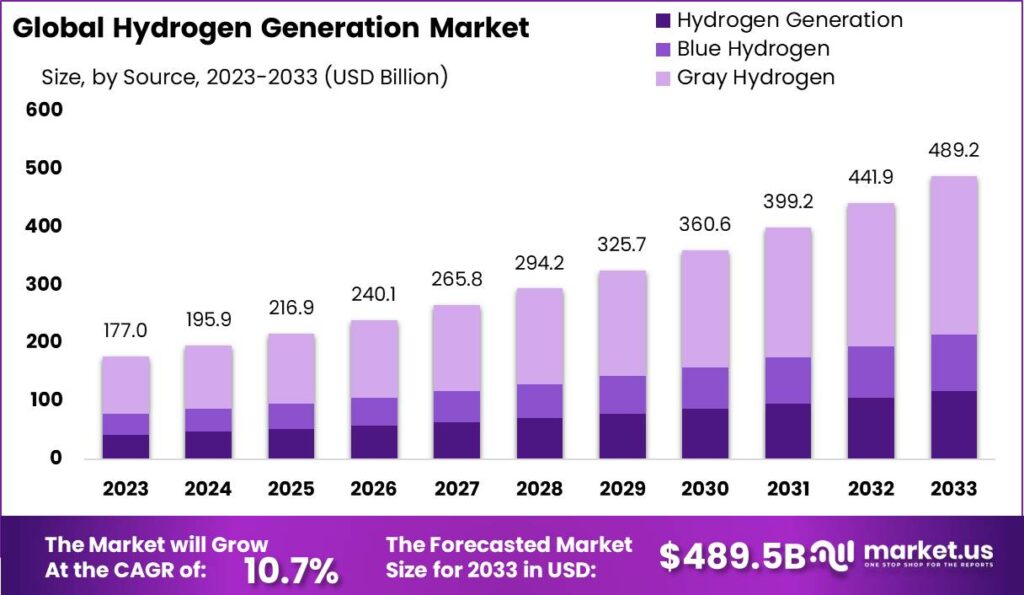
Hydrogen has potential in clean energy, especially when used as a fuel for fuel cells and as a raw material in industrial processes, which can reduce greenhouse gas emissions. Therefore, the demand for hydrogen has been increasing. In fuel cells, proton exchange membrane fuel cells have many characteristics that make them widely used in electric vehicles, space shuttles, submarines, communication systems, small and medium-sized power plants, household power supplies, and other places that require mobile power sources. Next, we will introduce the practical applications of proton exchange membrane fuel cells in the fields of fuel cell vehicles, fuel cell trams, and fuel cell ship power.
Fuel Cell Electric Vehicles (FCEV)
As early as 1966, General Motors developed the world’s first fuel cell road vehicle, named the Chevrolet Electrovan. This vehicle used a proton exchange membrane fuel cell (PEMFC) as its power source, with an output power of 5kW, a driving range of 193km, and a top speed of 113km/h.
Subsequently, countries such as the United States, the European Union, Japan, South Korea, and China invested substantial funds and human resources to promote the research of fuel cell vehicles. Companies like General Motors, Ford, Toyota, Honda, and Mercedes-Benz have successively developed fuel cell vehicles. For example:
General Motors (GM): Developed a fuel cell vehicle based on the Equinox SUV platform, which debuted in 2007 and was mainly used for demonstration and testing projects.
Ford: Developed a fuel cell vehicle based on the Ford Focus, which was tested and used in demonstration projects in the early 2000s.
Toyota: Launched the world’s first mass-produced and commercially available fuel cell vehicle in 2014. The second-generation Mirai, released in 2021, features higher performance and a longer driving range.
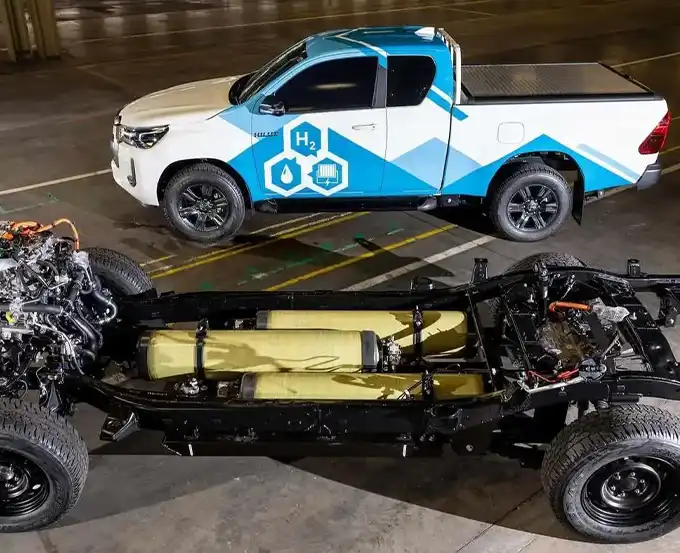
Honda: Released a fuel cell vehicle in 2008, becoming the first to be offered to ordinary consumers on a lease basis. The third-generation model, released in 2015, saw improvements in range and technology.
Major automakers have made significant progress in the field of fuel cell vehicles, introducing a series of innovative models. These models not only represent the development trajectory of fuel cell technology but also lay the foundation for market promotion.
To better understand the current status of this field, we can look at the latest data for a clearer picture. By the end of 2023, the total number of fuel cell vehicles surpassed 82,000, a year-on-year increase of 21.4%. South Korea still leads with a cumulative total of 34,000 fuel cell vehicles. China ranks second globally, with more than 18,000 fuel cell vehicles, surpassing the United States. In 2023 alone, China added nearly 6,000 vehicles, the highest increase globally. Japan and Germany have over 8,500 and 2,900 fuel cell vehicles, respectively. As for essential infrastructure, the construction of hydrogen refueling stations in major countries and regions worldwide has progressed steadily. By the end of 2023, there were 930 operational hydrogen refueling stations globally, a 12.2% increase year-on-year. Europe and North America had 188 and 65 stations, respectively, while Southeast Asia had 650 stations. (This data is sourced from official statistics published by various countries, and corrections are welcome if any errors are found.)
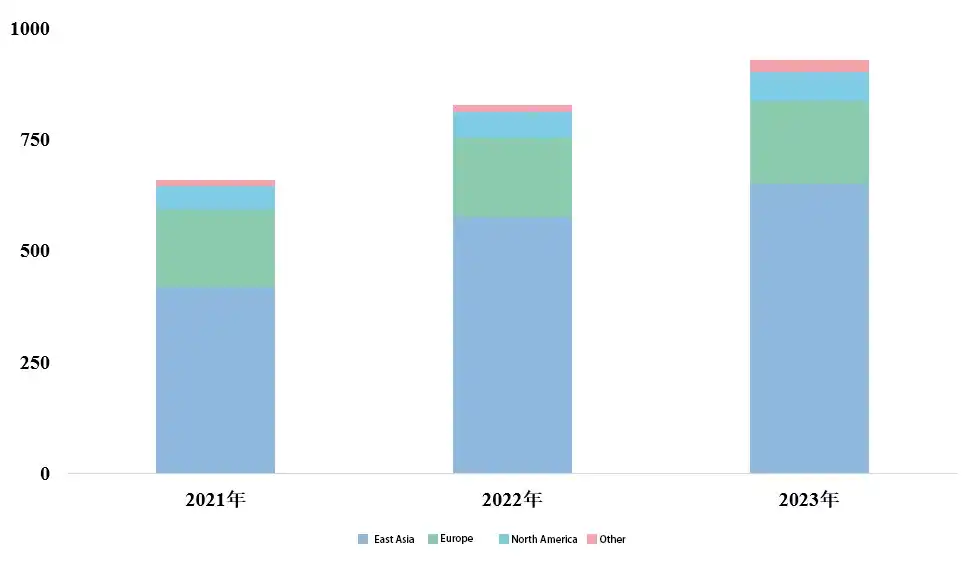
The data indicates that the number of fuel cell vehicles and hydrogen refueling stations worldwide continues to grow, reflecting the importance and investment various countries place on this field. Although the current demand for hydrogen fuel cell vehicles is limited, the market is expected to see greater development in the future with increased production and the continuous improvement of the hydrogen refueling station network.
Hydrogen Fuel Cell Rail Transit
In addition to fuel cell vehicles, the application of hydrogen fuel cell technology in rail transportation has also made significant progress. In 2017, Alstom in France promoted the hydrogen fuel cell train, which increased speed to 140 km/h and achieved a range of 600–800 km. From mid-June to the end of September 2023, Alstom transported over 10,000 passengers, conducted more than 130 trips, and covered a distance of 10,660 kilometers in a demonstration project. This project used green hydrogen-powered trains, saving approximately 8,400 liters of diesel and avoiding 22 tons of CO2 emissions during the trial period.
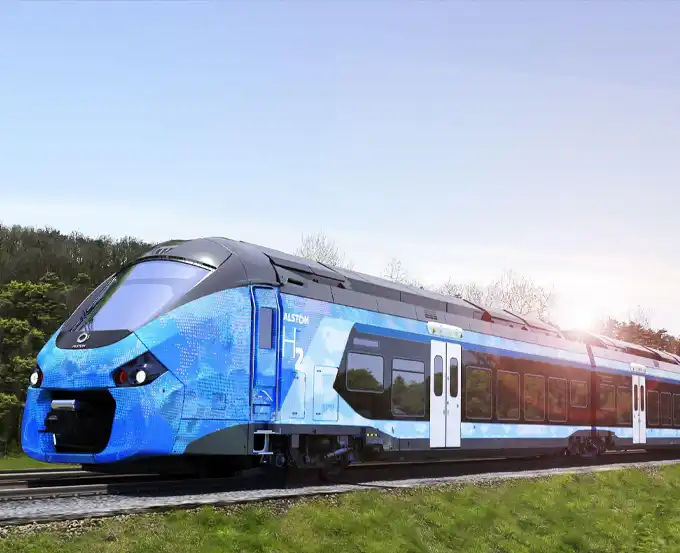
Recently, in July 2024, the hydrogen energy smart tram independently developed by CRRC Zhuzhou Institute in China was rolled off the production line in Yibin, Sichuan, and is expected to be put into use in August. This tram is the world’s first independently developed new type of green rail transit equipment that combines the dual advantages of rail and road transportation. The smart tram uses innovative autonomous guidance and rail-following technology, featuring low infrastructure investment, short construction cycles, flexible scheduling, low carbon emissions, environmental friendliness, and intelligent convenience. In terms of operational efficiency, it uses a 35MPa hydrogen storage system and a high-power fuel cell system, characterized by high energy conversion efficiency and fast hydrogen refueling, significantly improving vehicle operational efficiency. Regarding range, the hydrogen energy smart tram has a longer range. A single hydrogen refueling can ensure the tram runs more than 200 kilometers, meeting the long-distance operational needs of urban public transportation. It provides an innovative medium- to low-capacity rail transit system solution that balances capacity and cost advantages for urban transportation.
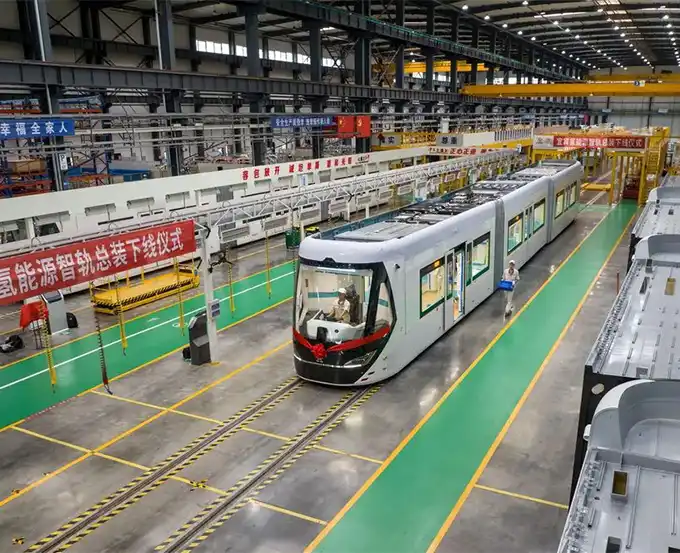
In addition, the application of hydrogen fuel cell technology in trams is becoming increasingly mature in the United States, Japan, Spain, and France. In 2022, the global hydrogen fuel cell train market was valued at $1.45098 billion. Experts point out that by 2030, this market value is expected to exceed $3.4 billion, growing at a compound annual growth rate of 11.5%.
Fuel Cell Ship Power
In response to increasing environmental pressures and the vision of carbon peak and carbon neutrality, the shipbuilding industry is accelerating its exploration of alternative fuels for ships. According to a recent white paper by the American Bureau of Shipping (ABS), liquefied natural gas (LNG), as a relatively mature low-carbon fuel, has been promoted and applied in the maritime field. Clean energies such as methanol, hydrogen, and ammonia are also emerging as “marine fuels,” and ships powered primarily by these fuels are gradually becoming important means to achieve zero-carbon goals in the shipping industry.
Countries and regions such as Europe, the United States, Japan, and South Korea have taken an early lead in the research and design of marine fuel cells. Currently, they are at the forefront of engineering applications and promotion, with many applications and demonstration projects involving marine fuel cell power propulsion systems.
In 2008, the Alsterwasser, a 48kW proton exchange membrane fuel cell passenger ship launched by Germany’s Zemships project, officially began operations on the Alster River, becoming the world’s first fuel cell electric propulsion passenger ship in operation.
The “FellowSHIP” fuel cell marine system demonstration project, funded by Norway, introduced the Viking Lady, an offshore supply vessel equipped with a 320kW fuel cell power system, in 2009. This ship, developed in collaboration with several European classification societies and companies, was the world’s first operational vessel to use fuel cell technology for onboard power generation.
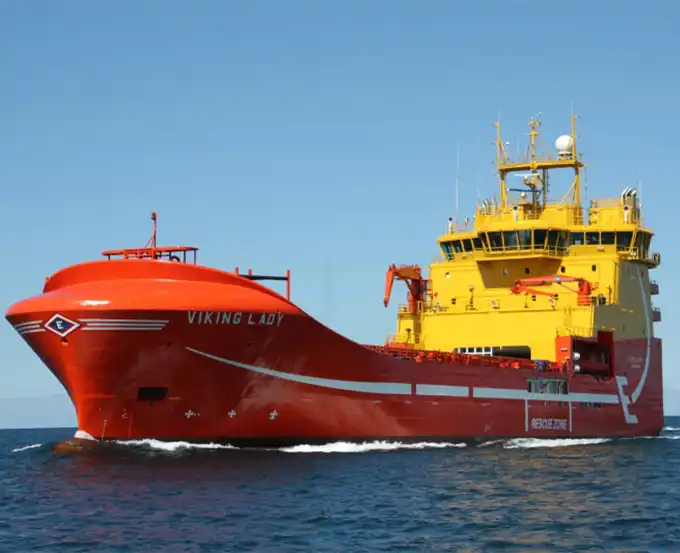
In 2017, the Energy Observer, developed in France, was launched and began its global voyage. This vessel’s fuel cell uses hydrogen fuel produced by a solar and wind-powered electrolysis system, stored in tanks. The hydrogen fuel cell system powers the ship during cloudy weather, nighttime, and the initial stages of long voyages, making it the world’s first vessel capable of producing its own hydrogen.
In 2018, Canada’s Ballard Power Systems announced the development of megawatt (MW)-class proton exchange membrane fuel cell systems for marine applications, focusing on cruise ships. The plan is to provide power when the cruise ships are docked at ports or to serve as the main propulsion power when operating at sea.
In 2024, Advent Technologies and Siemens Energy signed a Joint Development Agreement (JDA) to integrate Advent’s 50kW high-temperature proton exchange membrane (HT-PEM) module, based on ion pair membrane electrode assembly (MEA) technology, with Siemens Energy’s hybrid and electric marine electrification and automation solutions. The goal is to develop a 500kW-class integrated solution for maritime applications, ranging from motor yachts and mega yachts to ferries and container/commercial ships.

Summarize
The above sections detail the practical commercial applications of proton exchange membrane fuel cells across three major areas: fuel cell vehicles, fuel cell trains, and fuel cell ship power. As proton exchange membrane fuel cell technology continues to develop, it is expected to achieve large-scale commercialization and realize the vision of carbon neutrality in the future.
Related articles:
Entering the World of Fuel Cells: Understanding the Development of Fuel Cells
What are the main differences between PEM fuel cell,FCAFC,MCFC,SOFC and DMFC?
Detailed Explanation of the Structure and Principle of Proton Exchange Membrane Fuel Cells

